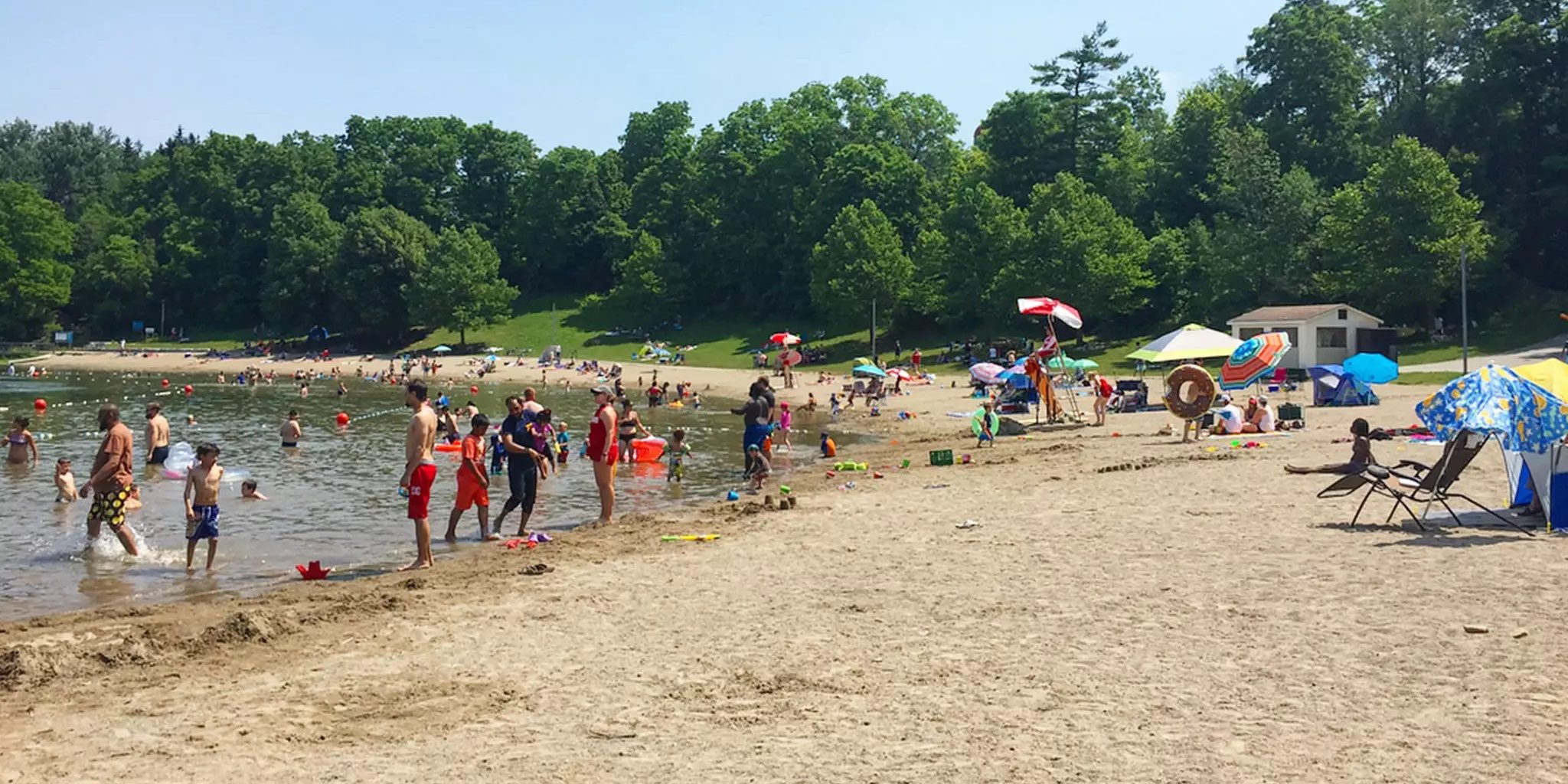Only one Halton beach unsafe for swimming in Milton, Burlington, Oakville, Halton Hills
Published August 26, 2022 at 2:10 pm

Despite the recent rainfall in the area, all but one of the eight public beaches in Burlington, Oakville, Milton and Halton Hills, have been certified safe for swimming by the local health department.
Only Prospect Park Old Beach in Acton has a Do Not Swim notification from Halton Region Public Health, which monitors water quality at selected recreational beaches in Halton Region. This is done as part of the Region’s commitment to protect the safety, health and well-being of all Halton residents.
Beaches in Halton are selected for monitoring based on how often they are used for swimming and other water sports.
Here is the status of all of the public beaches in Halton, including the date they were last tested:
- Beachway Park, 1094 Lakeshore Rd., Burlington, Aug. 24, Safe for swimming
- Brant Street Beach, Lakeshore/Brant St., Burlington, Aug. 24, Safe for swimming
- Bronte Beach Park, Lakeshore Rd./Bronte Rd., Oakville, Aug. 24, Safe for swimming
- Coronation Park East, 1426 Lakeshore Rd. W., Oakville, Aug. 24, Safe for swimming
- Coronation Park West, 1426 Lakeshore Rd. W., Oakville, Aug. 24, Safe for swimming
- South Shell Park Beach, 3376 Lakeshore Rd. W., Oakville, Aug. 24, Safe for swimming
- Kelso Beach, 5234 Kelso Rd., Milton, Aug. 24, Safe for swimming
- Prospect Park Old Beach, 30 Park Ave., Acton, Aug. 24, Not safe for swimming
From June until the Labour Day weekend Halton public beaches are routinely sampled every Wednesday. Due to the processing time of lab results, there is a delay in when the water is sampled and when results are received. Since water quality can change day-to-day, or even hour-to-hour depending on many factors, beach goers cannot rely only on lab results.
Here are some factors beach goers need to take into consideration before swimming:
- Rain has a significant impact on water quality. Rain washes contaminants into streams, rivers and lakes, increasing the bacterial levels. We do not recommend swimming for 24-48 hours after heavy rainfalls.
- High winds can cause waves which stir up sand and silt, making the water cloudy. If the water appears cloudy (i.e. you can’t see your feet standing waist deep in the water), swimming is not recommended.
- The presence of seagulls, geese, ducks, and their droppings can have a significant impact on water quality, increasing the bacterial levels.
- Warmer water temperatures in shallow water are more favourable for bacterial growth and may increase bacterial levels.
- Heavy algae growth or accumulation
- Visible debris, metal, or sharp objects in the water or beach area
The Health Department monitors public beaches to protect swimmers from illnesses linked to unsafe water quality. Swimming in water with large amounts of algae or other debris can be a hazard. Swimming in water with high levels of bacteria can cause an increased risk of:
- Infection in ears, eyes, nose and throat.
- Gastrointestinal or stomach illnesses when water is swallowed.
- Swimming in water with excess algae or other debris can be a hazard.
To alert bathers to the potential of a higher than normal risk of infection, a warning sign is posted by the Local Municipality advising the users that the water may be unsafe for swimming. Postings are removed once sample results indicate the levels of bacteria are within acceptable limits.
For more information about public beaches in Halton, visit the region’s website.
insauga's Editorial Standards and Policies advertising





